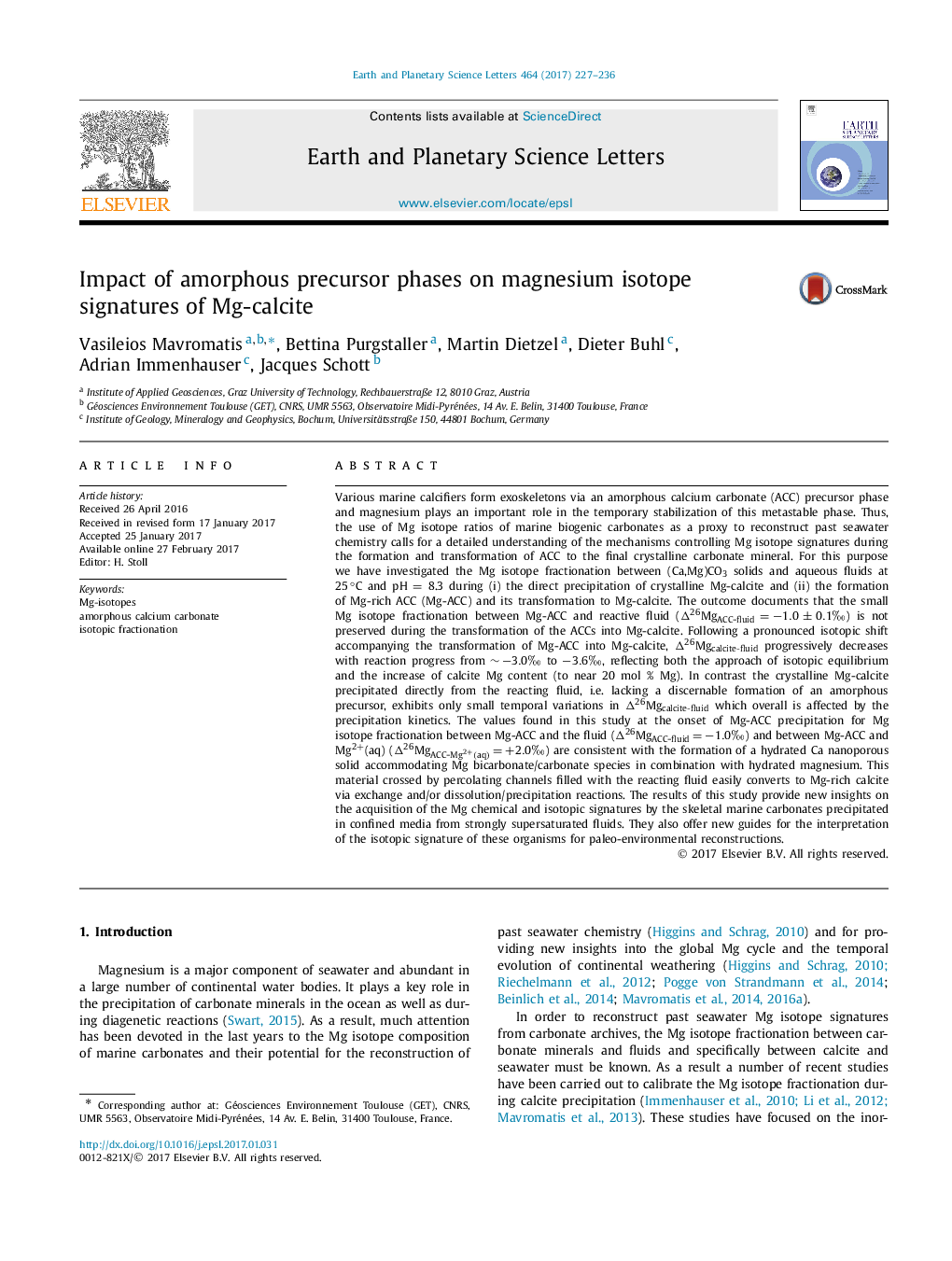| Article ID | Journal | Published Year | Pages | File Type |
|---|---|---|---|---|
| 5779926 | Earth and Planetary Science Letters | 2017 | 10 Pages |
â¢The Mg isotope fractionation between Mg-calcite and fluid is examined.â¢This fractionation is controlled by the presence of an amorphous precursor phase.â¢In the presence of an amorphous precursor Mg-Calcite achieves isotopic equilibrium.â¢This Mg isotope composition does not reflect that of the precursor forming fluid.â¢In the absence of this precursor kinetic isotope effects can be measured.
Various marine calcifiers form exoskeletons via an amorphous calcium carbonate (ACC) precursor phase and magnesium plays an important role in the temporary stabilization of this metastable phase. Thus, the use of Mg isotope ratios of marine biogenic carbonates as a proxy to reconstruct past seawater chemistry calls for a detailed understanding of the mechanisms controlling Mg isotope signatures during the formation and transformation of ACC to the final crystalline carbonate mineral. For this purpose we have investigated the Mg isotope fractionation between (Ca,Mg)CO3 solids and aqueous fluids at 25â°C and pH = 8.3 during (i) the direct precipitation of crystalline Mg-calcite and (ii) the formation of Mg-rich ACC (Mg-ACC) and its transformation to Mg-calcite. The outcome documents that the small Mg isotope fractionation between Mg-ACC and reactive fluid (ÎMgACC-fluid26=â1.0±0.1â°) is not preserved during the transformation of the ACCs into Mg-calcite. Following a pronounced isotopic shift accompanying the transformation of Mg-ACC into Mg-calcite, Î26Mgcalcite-fluid progressively decreases with reaction progress from â¼â3.0â° to â3.6â°, reflecting both the approach of isotopic equilibrium and the increase of calcite Mg content (to near 20 mol % Mg). In contrast the crystalline Mg-calcite precipitated directly from the reacting fluid, i.e. lacking a discernable formation of an amorphous precursor, exhibits only small temporal variations in Î26Mgcalcite-fluid which overall is affected by the precipitation kinetics. The values found in this study at the onset of Mg-ACC precipitation for Mg isotope fractionation between Mg-ACC and the fluid (ÎMgACC-fluid26=â1.0â°) and between Mg-ACC and Mg2+(aq) (ÎMgACC-Mg2+(aq)26=+2.0â°) are consistent with the formation of a hydrated Ca nanoporous solid accommodating Mg bicarbonate/carbonate species in combination with hydrated magnesium. This material crossed by percolating channels filled with the reacting fluid easily converts to Mg-rich calcite via exchange and/or dissolution/precipitation reactions. The results of this study provide new insights on the acquisition of the Mg chemical and isotopic signatures by the skeletal marine carbonates precipitated in confined media from strongly supersaturated fluids. They also offer new guides for the interpretation of the isotopic signature of these organisms for paleo-environmental reconstructions.
Graphical abstractDownload high-res image (57KB)Download full-size image
